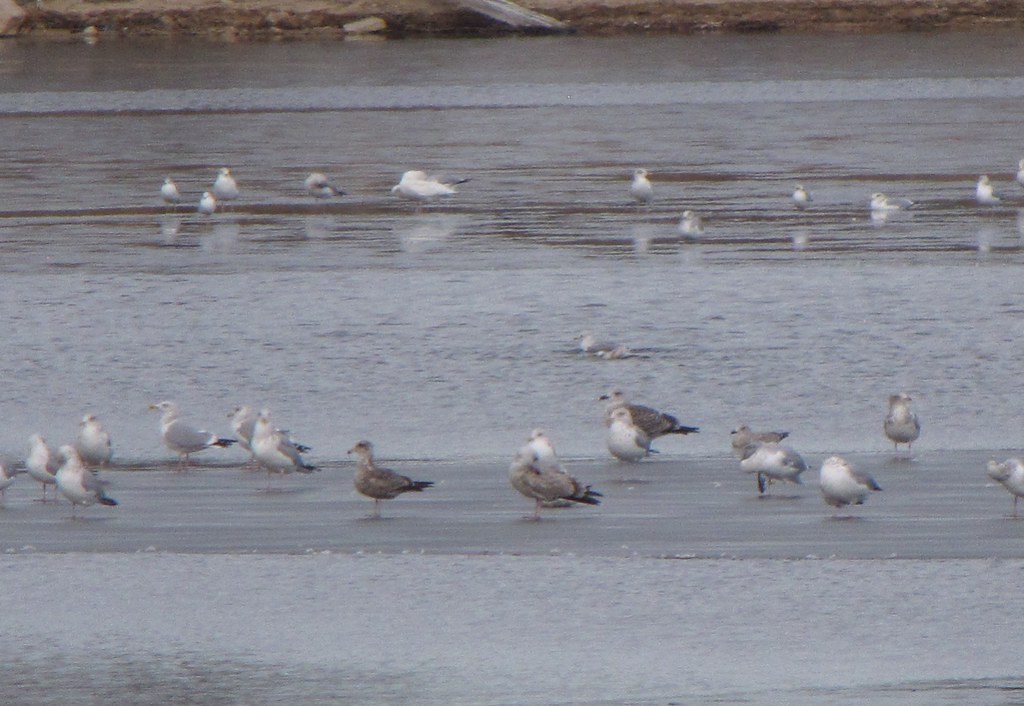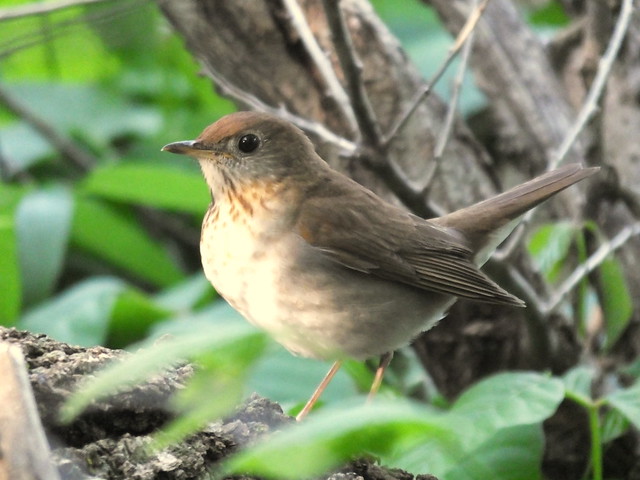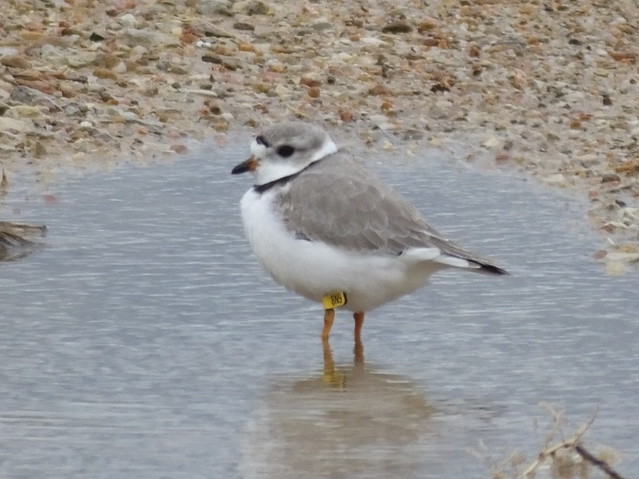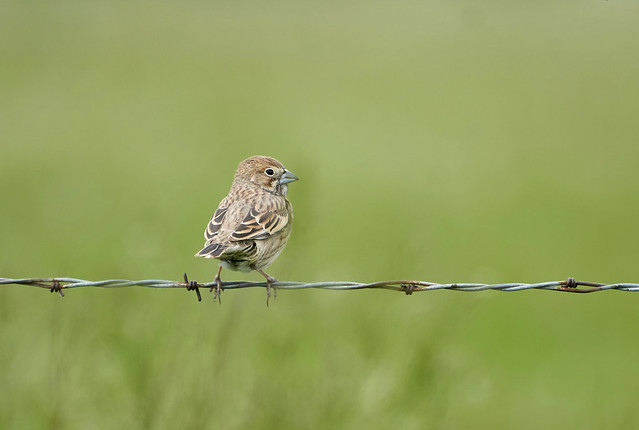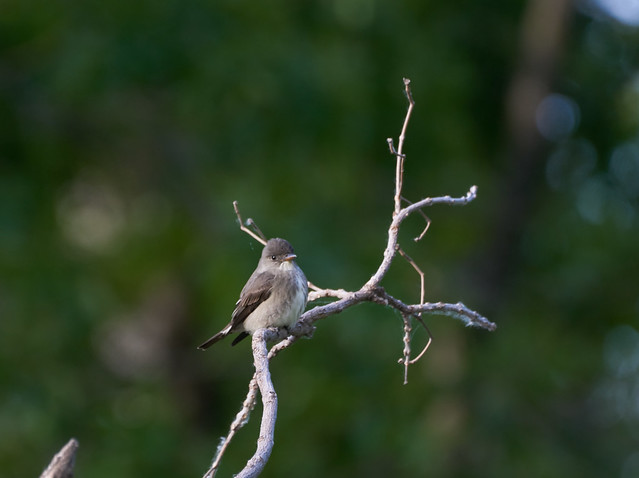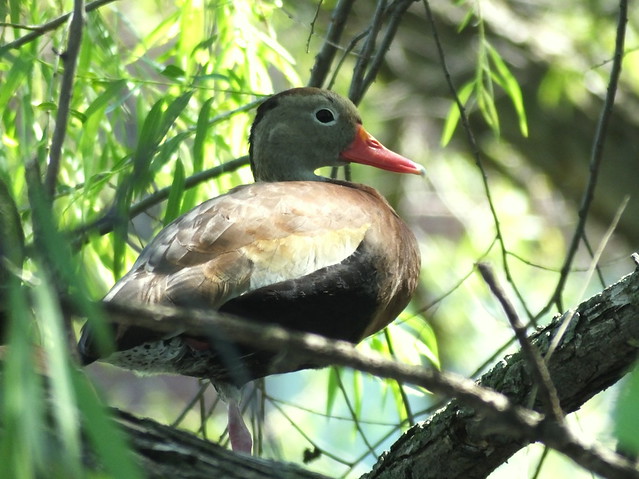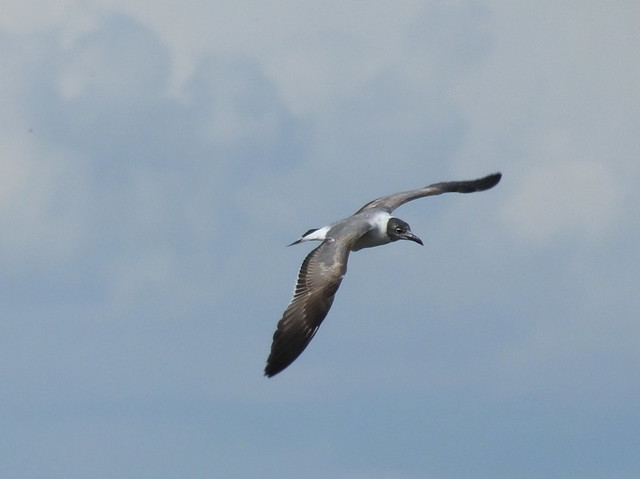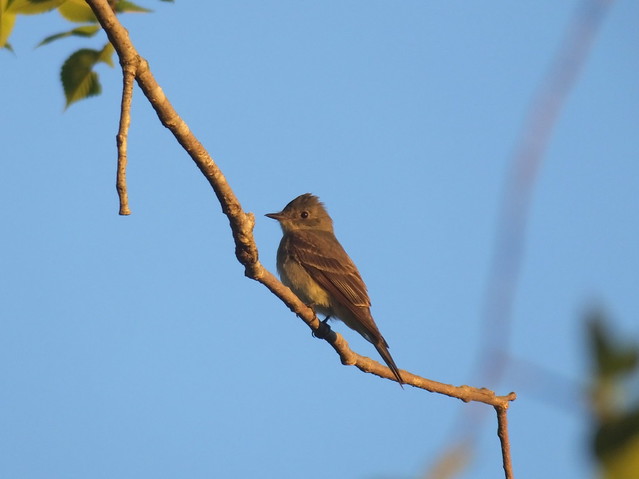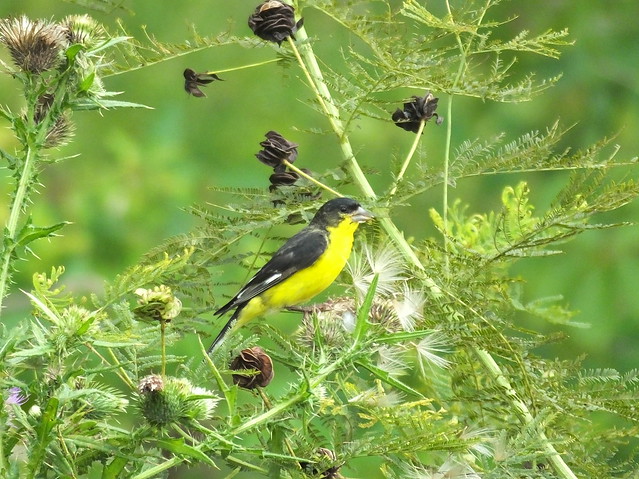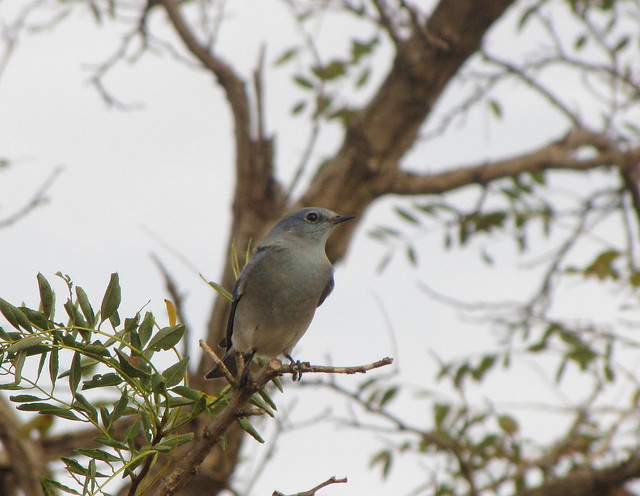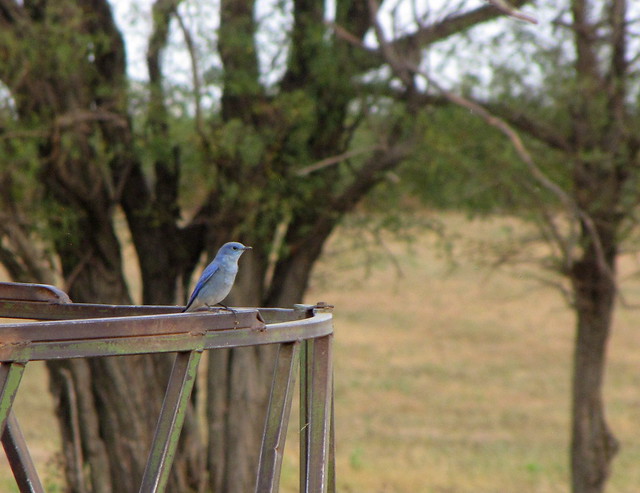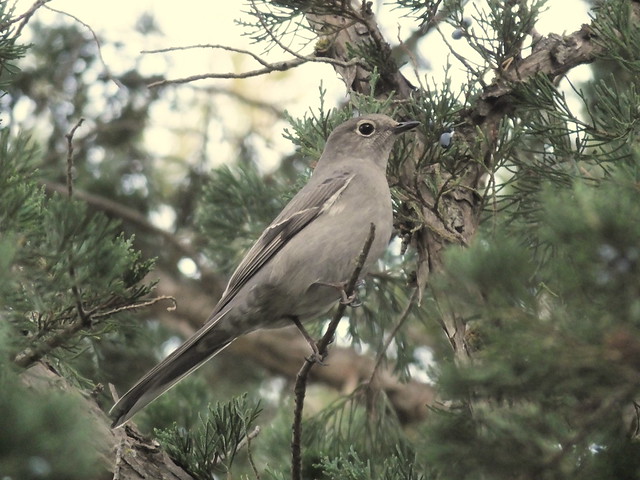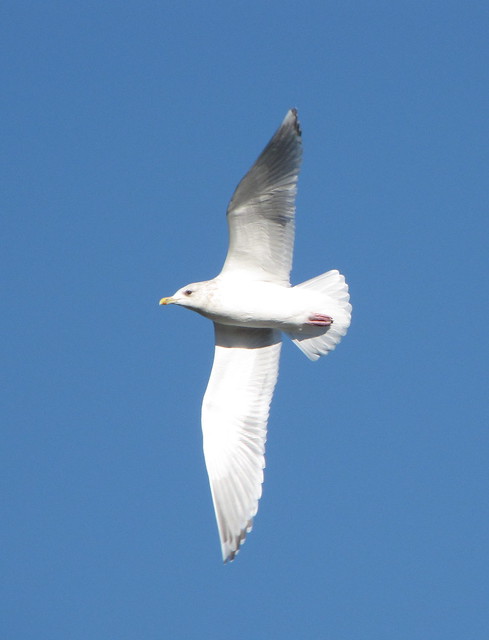A Pacific Wren was recently reported at Scott State Lake in western Kansas by a group searching for a Pygmy nuthatch that had been found the day before. As both of these are very good birds in Kansas (2nd and 10th reports respectively), Andrew Miller and I decided to run out there very early Thanksgiving morning. Despite miscalculating the time and getting there nearly an hour before sunrise, we were able to stake out at the Pacific Wren location and began watching and listening. Although we searched for nearly three hours, we were unable to relocate the original wren at that location. However, whilst looking at a Pygmy Nuthatch about a mile away a bit later, we heard the familiar chatter call of a stub-tailed wren coming from the creek nearby.
We trotted down there immediately, and since we finally had cell service there, played the Pacific Wren call, partly to remind ourselves what it sounded like and partly to see if the wren would respond. The wren did respond, and then flew across the creek to join a second stub-tailed wren. The second wren began calling, and instead of a familiar "jimp-jimp" like the other wren, began giving a high, squeaky "tsip" call. Since any stub-tailed wren this far west is rare, we recorded and photographed both wrens.
We were able to get a decent recording of the odd bird's calls, and were pretty sure it wasn't a normal Winter Wren. The bird also gave a variety of chatter calls which we recorded as well.
Now, let's go back to how Winter and Pacific Wrens are normally separated. While visually very similar, the calls are usually fairly easily separated; Winter with a low, squeaky "jimp" call and Pacific with a higher "tcht" call.
 |
| Top: Pacific Wren Bottom:Winter Wren |
On a spectrogram, The shape of the call is quite distinctive; Pacific is a sharp, vertical burst of noise, while Winter is a stack of inverted "U"s. In addition the peak intensity of the Pacific's call is usually between 6-8 kHz (fide Nathan Pieplow), while that of Winter is usually between 3-4.5 kHz.
What about our bird? Well, it didn't really fit either species.
I was pretty stumped by the time I got around to reviewing these recordings, so I sent around a plea on the ID Frontiers listserve. I've gotten many helpful responses, but one in particular from Tony Leukering inspired me to check out the eastern subspecies of Pacific Wren, Troglodytes pacificus saleborus. I soon found out that there are very few labeled recordings of this subspecies' call online, but I was able to compare a few. What I found was pretty interesting.
One bird in particular from eastern Washington caught my interest. To the ear it sounded squeaky, like mine, and that was confirmed by looking at the spectrogram.
 |
| Top: saleborus Pacific Bottom: Scott Lake bird |
While it's not a perfect match, it was exciting to see that Pacific Wren can show calls with clearly defined stacked harmonics. Looking around a bit more, I was able to find a few more recordings that sounded similar to this as well. Does this confirm our bird as a Pacific? Not necessarily. I think it does prove that Pacific Wrens can have calls that do sound squeaky, and not just a burst of noise, but my sample size is still be too small to know if there is a solid connection between this call and the saleborus subspecies.
I still haven't ruled out for sure that Winter Wrens can make this call either. None of the recordings of them I found sounded like this bird or showed a similar spectrogram, but again, my sample size was limited to a few dozen recordings on Xeno-Canto.
After this research, I began wondering whether the chatter calls of these species are identifiable. I haven't ever seen them properly compared, and people usually just left it at "they sound a little different," so I decided to see if I could quantify that difference. To begin, I downloaded a bunch of recordings of their calls from Xeno-Canto and plugged them into Audacity to get comparable spectrograms. I also was a little lax right then and didn't remember to credit which recordings I used, sorry people. But anyway, I took some screenshots and began comparing them.
 |
| Top: Pacific Wren Bottom: Winter Wren |
The first thing that jumped out at me was the different pitch of the calls. Pacific's topping out at over 8 kHz and Winter at about 7 kHz. The second thing was the shape of the calls, Pacific's is nearly straight and consists of a downward sloping line with a light, high line right after it, (kind of like an l with an apostrophe after it like this l'). Winter's on the other hand looks like a simple inverted checkmark, with perhaps a faint harmonic echo above it.
Now to compare that with the wren we saw.
 |
| Middle: Scott Lake Bird |
Huh, it was definitely very similar to the Pacific's call, about the same in pitch with the "apostrophe" after the main note even more pronounced, and certainly doesn't have the checkmark shape of the Winter Wren.
Does this prove that our wren was a Pacific and that these differences are a consistent way of differentiating these chatter calls? Frankly I don't know yet. My sample size for all of this research is quite small and I can't know for sure that there isn't overlap without more research. I do think it is exciting however, that this is potentially a new way of telling them apart, and it's one that certainly needs more more study.
Any input on the wren in question would be greatly appreciated, either via comments below or responding to the ID Frontiers thread. Although a couple people have expressed support for it being a Pacific, due to it's rarity I still don't feel 100% OK with submitting it as one without having at least a few more give input

